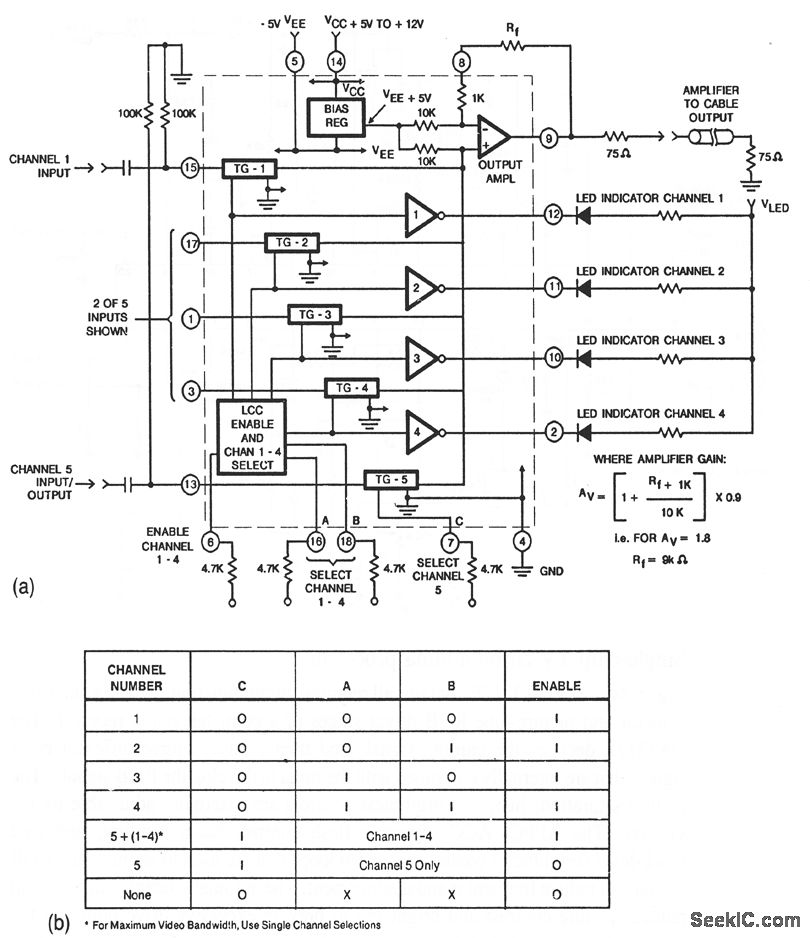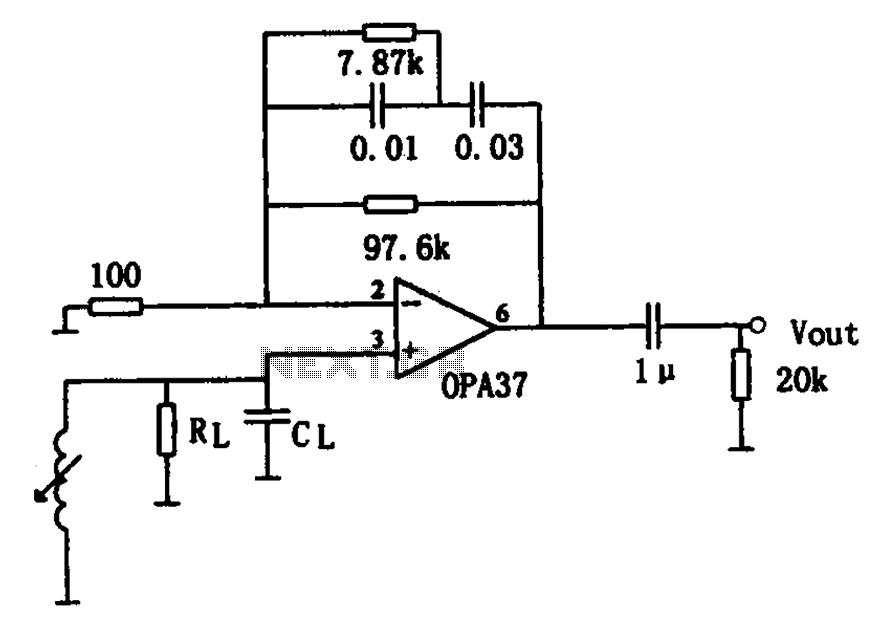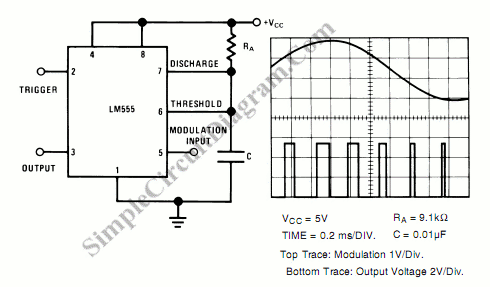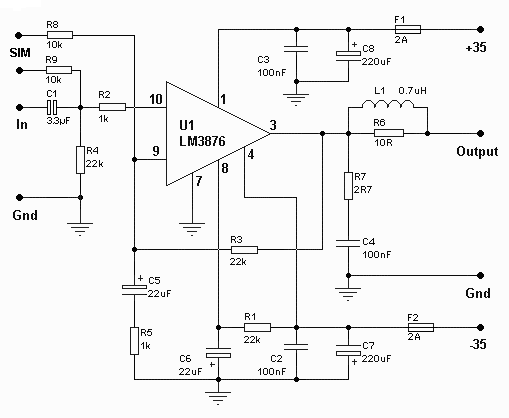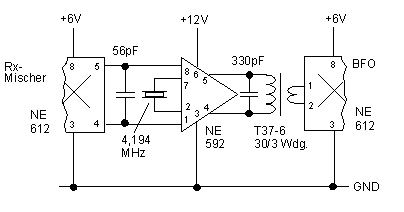
16w bridge amplifier using lm383
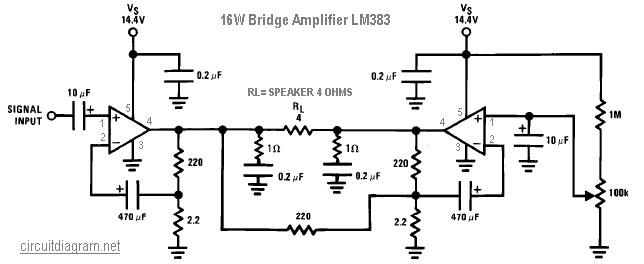
The following diagram illustrates a 16W bridge audio amplifier circuit. The design incorporates two LM383 power ICs in a head connection, making this amplifier a head amplifier. The LM383 is an older model that has been discontinued, which may make it challenging to source. Alternatives such as ECG1232, TDA2002, or TDA2003 can be used as substitutes for the LM383. It is important to note that a heatsink is necessary to prevent overheating of the ICs.
The 16W bridge audio amplifier circuit is designed to deliver a robust audio output suitable for various applications, including home audio systems and small public address systems. The configuration utilizes a bridge topology, which allows for increased power output by effectively using both halves of the power supply.
In this circuit, the two LM383 ICs are connected in a manner that enables them to drive the load in a push-pull configuration. This setup enhances the efficiency and output power of the amplifier, resulting in a total output of 16 watts. The bridge connection also improves the audio quality by minimizing distortion and maximizing the dynamic range.
Given the discontinuation of the LM383, it is advisable to consider the ECG1232, TDA2002, or TDA2003 as viable alternatives. Each of these substitutes offers comparable performance characteristics, but it is essential to review their respective datasheets for specific pin configurations and electrical specifications to ensure compatibility.
Thermal management is a critical factor in the design of this amplifier. The LM383 and its substitutes can generate significant heat during operation, especially at higher output levels. Therefore, incorporating an appropriate heatsink is crucial. The heatsink should be selected based on the thermal resistance requirements of the chosen IC and the expected power dissipation. Adequate thermal coupling between the IC and the heatsink will help maintain optimal operating temperatures and ensure reliable performance.
In summary, this 16W bridge audio amplifier circuit is a practical solution for audio amplification needs, with careful consideration given to component selection and thermal management to ensure efficient and reliable operation.The afterward diagram is 16W Bridge audio amplifier circuit. The ambit congenital based 2 pieces of ability IC LM383 in arch connection, so this amplifier is an arch amplifier. This is an old amplifier, LM383 is discontinued, so this LM383 ability be difficult to find. You can use ECG1232, TDA2002 or TDA2003 as the alter for LM383. Take a agenda t hat a heatsink bowl is appropriate to abstain overheating on the ICs. 🔗 External reference
The 16W bridge audio amplifier circuit is designed to deliver a robust audio output suitable for various applications, including home audio systems and small public address systems. The configuration utilizes a bridge topology, which allows for increased power output by effectively using both halves of the power supply.
In this circuit, the two LM383 ICs are connected in a manner that enables them to drive the load in a push-pull configuration. This setup enhances the efficiency and output power of the amplifier, resulting in a total output of 16 watts. The bridge connection also improves the audio quality by minimizing distortion and maximizing the dynamic range.
Given the discontinuation of the LM383, it is advisable to consider the ECG1232, TDA2002, or TDA2003 as viable alternatives. Each of these substitutes offers comparable performance characteristics, but it is essential to review their respective datasheets for specific pin configurations and electrical specifications to ensure compatibility.
Thermal management is a critical factor in the design of this amplifier. The LM383 and its substitutes can generate significant heat during operation, especially at higher output levels. Therefore, incorporating an appropriate heatsink is crucial. The heatsink should be selected based on the thermal resistance requirements of the chosen IC and the expected power dissipation. Adequate thermal coupling between the IC and the heatsink will help maintain optimal operating temperatures and ensure reliable performance.
In summary, this 16W bridge audio amplifier circuit is a practical solution for audio amplification needs, with careful consideration given to component selection and thermal management to ensure efficient and reliable operation.The afterward diagram is 16W Bridge audio amplifier circuit. The ambit congenital based 2 pieces of ability IC LM383 in arch connection, so this amplifier is an arch amplifier. This is an old amplifier, LM383 is discontinued, so this LM383 ability be difficult to find. You can use ECG1232, TDA2002 or TDA2003 as the alter for LM383. Take a agenda t hat a heatsink bowl is appropriate to abstain overheating on the ICs. 🔗 External reference
